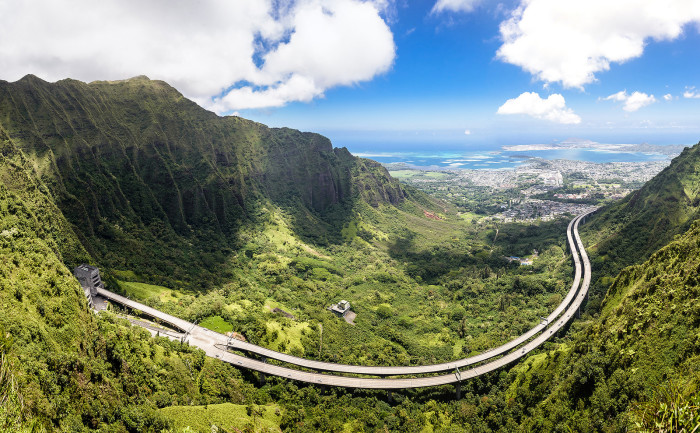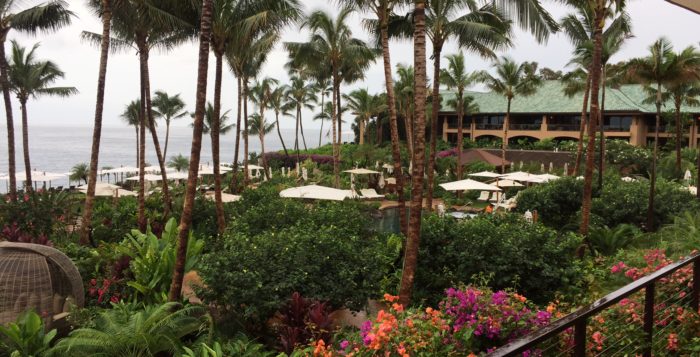

Plane had one working lavatory for a cabin of 150 economy passengers. Seats for my wife and I were not where I had reserved. Additionally, sleeping passengers are often the easiest/cheapest to service!"Ĭons: "I don't normally leave reviews, but words really can't describe the nightmarishness of what should have been a quick four hour flight from San Francisco to Washington. the extra investment will pay for itself quickly in this age of reduced travel as you'll attract more of those who are lucky to be able to pay a little more to fly in comfort for the few times that they need to.

#Detours hawaii upgrade
The front passenger seat of a common car offers more for a five hour road trip - something to ponder on, eh? Upgrade the seats. That makes it impossible to stretch the body out while fully supported - so hard to go into relaxed/deep sleep for those who wish to do so. The back locks into one of two positions - a vertical one for take-off/landing and a second one tilted about 15 degrees or so. There is no concept of a foot rest in the design. The base is for all intent and purposes, immovable (maybe a couple of inches back and forth at best). brief napping is the best you can do - carry your entertainment/work or plan on meditating while fully awake.

The seats in first class are just not meant for sleeping and are thus limited in their positioning. I normally sleep well/easily on flights (at times, "too well"!) but could not do so on this leg. The airline industry will need to keep that segment to get ahead of this seismic shift in travel patterns that 2020 has brought upon all of us. I expect that this will more likely be the norm than not and hope/expect that more among us who can afford to pay extra for the additional comfort, do so.
#Detours hawaii full
Like most, my travel frequency has dropped so much that I can finally afford to pay full fare first for the few times I do need to travel. Silva, Ty P.Cons: "My only gripe is about the seats fitted in first class for this Alaska Air leg (JFKSFO). Kawailanaokeawaiki Saffery, Dean Itsuji Saranillio, Noenoe K. Kapā‘anaokalāokeola Nākoa Oliveira, Jamaica Heolimelekalani Osorio, No‘eau Peralto, No‘u Revilla, Kalaniua Ritte, Maya L. Kalawai‘a Moore, Summer Kaimalia Mullins-Ibrahim, Jordan Muratsuchi, Hanohano Naehu, Malia Nobrega-Olivera, Katrina-Ann R. Lyons, David Uahikeaikalei‘ohu Maile, Brandy Nālani McDougall, Davianna Pōmaika‘i McGregor, Laurel Mei-Singh, P. Trisha Lagaso Goldberg, Kapulani Landgraf, Laura E. Kekoolani-Raymond, Kekuewa Kikiloi, William Kinney, Francesca Koethe, Karen K. Kahanu, Haley Kailiehu, Kyle Kajihiro, Halena Kapuni-Reynolds, Terrilee N.

Furuto, Sonny Ganaden, Cheryl Geslani, Vernadette Vicuña Gonzalez, Noelani Goodyear-Ka‘ōpua, Tina Grandinetti, Craig Howes, Aurora Kagawa-Viviani, Noelle M. Joe Estores, Nicholas Kawelakai Farrant, Jessica Ka‘ui Fu, Candace Fujikane, Linda H. Chang, Lianne Marie Leda Charlie, Greg Chun, Joy Lehuanani Enomoto, S. Aikau, Malia Akutagawa, Adele Balderston, Kamanamaikalani Beamer, Ellen-Rae Cachola, Emily Cadiz, Iokepa Casumbal-Salazar, David A. The essays, stories, artworks, maps, and tour itineraries in Detours create decolonial narratives in ways that will forever change how readers think about and move throughout Hawai‘i. In this brilliant reinvention of the travel guide, artists, activists, and scholars redirect readers from the fantasy of Hawai‘i as a tropical paradise and tourist destination toward a multilayered and holistic engagement with Hawai‘i's culture and complex history. While Hawai‘i is indeed beautiful, Native Hawaiians struggle with the problems brought about by colonialism, military occupation, tourism, food insecurity, high costs of living, and climate change. Many people first encounter Hawai‘i through the imagination-a postcard picture of hula girls, lu‘aus, and plenty of sun, surf, and sea.


 0 kommentar(er)
0 kommentar(er)
